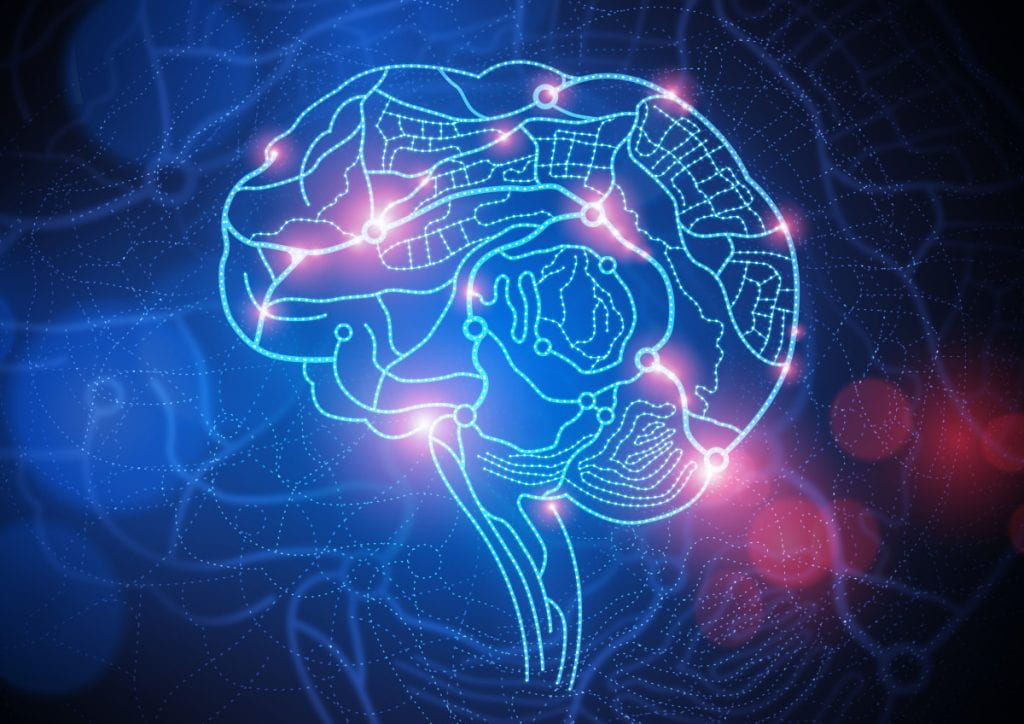A patient coming into the emergency room with chest pain and nausea could be suffering from a myriad of conditions—something as minor as indigestion or as severe as a heart attack. It is important to quickly diagnose them, but thankfully there is a blood test that that can tell if the patient is having a heart attack by looking for a specific biomarker. On the other hand, a patient coming into a psychologist’s office with agitation, disrupted sleep, and trouble concentrating could, again, have whole host of conditions— depression, anxiety, maybe depression with anxiety characteristics, or perhaps early stages of schizophrenia? Unlike with a heart attack however, there is not a quick and easy test to tell which mental health disorder they have because there are no biomarkers for mental health. Researchers have investigated mental health biomarkers in blood and other physiological sources for decades, but with little success. This is in part because of limitations in the technology but also due to factors innate in mental health disorders.
Physiological biomarkers have had limited success because these sources are so detached from the source of the disorder – the mind. Up until recently, the only insight into the mind has been through psychological questioning, nothing biological. However, recent advances in MRI technology has changed the game. Functional MRI allows researchers to look at blood oxygen levels to investigate the activity of the brain as oxygen increases with activity. This activity reflects the pattern of how the patient thinks – a biological marker of the mind. For example, a patient with depression will generally exhibit more negative reactions to experiences, activating specific regions of the brain in specific patterns.
MRI technology is promising but it has and will continue to have limitations that need to be overcome before elucidating mental health biomarkers. Previously, MRI was too low quality to acquire enough detail to parse out different brain regions. Now, the standard 3 Tesla MRI has 1mm resolution – like going from black & white television to HD. We also now have the computational power to better handle the immense amount of activity of a brain, and there has been an explosion of computational imaging labs forming around the world to analyze this data. However, MRI research still has one major hurdle to overcome – the group average. Typically, researchers of all fields categorize individuals into a control/healthy group and the disordered group, and the results of each group are averaged. For a diagnostic tool, the patient is compared to the average of the disordered group. For the most part this is sufficient; however, it prevents the nuanced and personalized understanding that is especially important in mental health. Simply put, the average of many brains tells you what the average brain is. Brain network patterns are too complicated and nuanced to diagnose a patient by how much their brain looks like the average depressed brain. Recent advances now provide the computational power to investigate brain networks on a personalized level, hopefully solving this problem in the future.
While the technical limitations of the research are important to overcome, there is a much more insidious issue that needs to be addressed – the disorders themselves. Mental health research has been undermined again and again by the very thing it seeks to understand. Mental health disorders are notoriously unreliable with high heterogeneity, low inter-rater reliability (poor agreement between clinicians’ diagnoses), and high co-morbidity. There are 9 official symptoms of Major Depressive Disorder and a patient only needs 5 out of the 9 to be diagnosed. This means two patients can have the same diagnosis and only have one symptom in common – this is heterogeneity. Inter-rater reliability is low with the average kappa score, a measurement for inter-rater reliability, at 0.43. For reference, the kappa score for heart attacks is 0.84. Mental health disorders are also highly co-morbid. For example, anxiety and depression co-occur in the same individual 74% of the time. These issues are big red flags that indicate clinicians cannot reliably distinguish and diagnose disorders. The root of these issues stem from how mental health disorders are categorized – by symptom, not biology. Almost certainly these disorders are not biologically distinct and so research using that framework was bound to fail. To address the poor categorization of these disorders, the National Institute of Mental Health has initiated the RDoC (Research Domain Criteria), which re-categorizes disorders based on the biological understanding that is being built.
The lack of biological understanding and categorization of mental health disorders is a main contributor to why finding treatments and medications that work for each patient is difficult. Some patients with the depression label respond well to a specific medication, such as Zoloft, while others do not respond or have a bad reaction. Furthermore, patients have to wait weeks before these medications take effect. Patients commonly have to try several medications before finding one that works. Because there is not a good, definitive test, patients suffer with untreated or poorly treated disorders for months to years. With 1 in 5 Americans living with a mental illness, it is critically important to improve diagnostics and treatment. The limitations of the disorder categorization and research methods have given field has faced many challenges, but biological markers are on the horizon. The improvement in MRI technology, research methods, and biology-based categorization are paving ground for future research. Once these markers are found, diagnosis will be much more reliable and a barrier to improved treatments will disappear.
